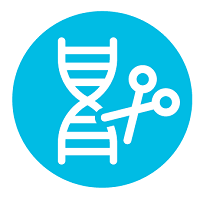Advances in Discovery, Formulation, and Delivery of New Modalities
Symposium: AI/ML in Drug Discovery and Development
Assessing Immunogenicity Risk of Biologics: Prediction Tools, and Case Studies
Thursday, May 16, 2024
10:30 AM - 11:00 AM PT
Location: Yosemite BC

Swati Gupta, PhD (she/her/hers)
Executive Director
AbbVie
Irvine, California
Speaker(s)
The assessment of immunogenicity risk is of utmost importance in the development of biologics, as it directly influences patient safety and therapeutic effectiveness. This talk aims to discuss the latest advancements, challenges, and strategies in the field of immunogenicity risk assessment. Specifically, the talk will focus on contaminant considerations, prediction tools, and case studies in ocular therapeutics, providing valuable insights into the evaluation of immunogenicity risk in biologics.
The objective of this talk will be as follows:
1. Discuss the significance of considering contaminants in assessing and managing immunogenicity risk.
2. Review the role and utility of prediction tools in evaluating the risk of immunogenicity in biologics.
3. Facilitate discussions on best practices, novel approaches, and future directions in the field of immunogenicity risk assessment.
This talk will feature case studies that focus on contaminant considerations for immunogenicity risk assessment, including the evaluation of host cell proteins, endotoxins, and impurities. Strategies for effective contaminant control during the manufacturing process will also be explored. Additionally, the talk will delve into the utilization of prediction tools for immunogenicity risk assessment, such as in silico models and in vitro tools. The assessment involving various in vitro techniques to evaluate the immunogenicity of ocular therapeutics including cytokine release and T cell proliferation will be discussed. By showcasing these case studies, the talk will explore the latest advancements in evaluating the immunogenicity risk of ocular therapeutics using tools to evaluate innate and adaptive immune response. Overall, the immunogenicity risk assessment of ocular therapeutics using in vitro tools provides valuable insights into the potential immune response triggered by these routes of administration. This information can aid in the development and optimization of ocular therapeutics, ultimately improving patient outcomes and safety.
The objective of this talk will be as follows:
1. Discuss the significance of considering contaminants in assessing and managing immunogenicity risk.
2. Review the role and utility of prediction tools in evaluating the risk of immunogenicity in biologics.
3. Facilitate discussions on best practices, novel approaches, and future directions in the field of immunogenicity risk assessment.
This talk will feature case studies that focus on contaminant considerations for immunogenicity risk assessment, including the evaluation of host cell proteins, endotoxins, and impurities. Strategies for effective contaminant control during the manufacturing process will also be explored. Additionally, the talk will delve into the utilization of prediction tools for immunogenicity risk assessment, such as in silico models and in vitro tools. The assessment involving various in vitro techniques to evaluate the immunogenicity of ocular therapeutics including cytokine release and T cell proliferation will be discussed. By showcasing these case studies, the talk will explore the latest advancements in evaluating the immunogenicity risk of ocular therapeutics using tools to evaluate innate and adaptive immune response. Overall, the immunogenicity risk assessment of ocular therapeutics using in vitro tools provides valuable insights into the potential immune response triggered by these routes of administration. This information can aid in the development and optimization of ocular therapeutics, ultimately improving patient outcomes and safety.
Learning Objectives:
- Discuss the significance of considering contaminants in assessing and managing immunogenicity risk.
- Review the role and utility of prediction tools in evaluating the risk of immunogenicity in biologics/ocular drugs.
- Facilitate discussions on best practices, novel approaches, and future directions in the field of immunogenicity risk assessment for ocular biotherapeutics.

